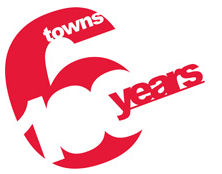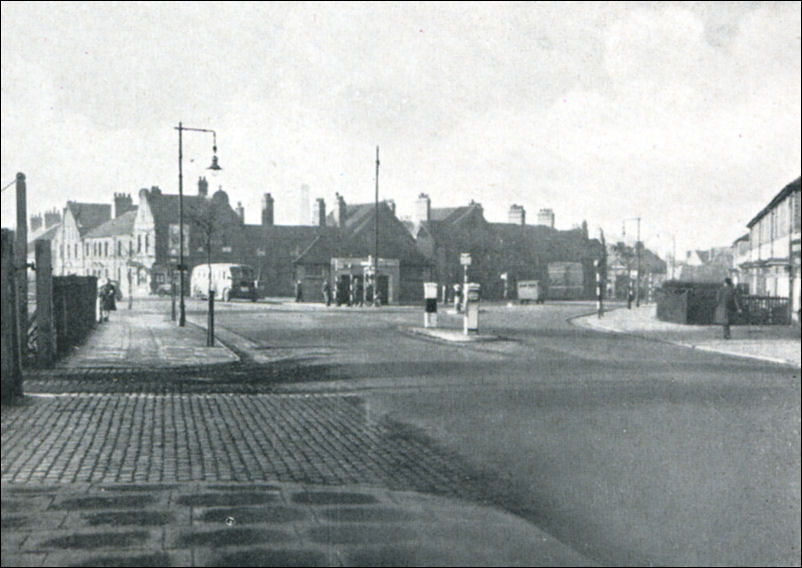![]()
|
|
|
|
|
Stoke-on-Trent - photo of the week |
Advert of the Week
Potworks of the Week
Fenton -
Victoria Place

|
Scenes in the Six Towns "It is natural that to some extent the six towns now federated as the city of Stoke-on-Trent should have their independent lives and local associations existing side by side with their corporate life and wider civic associations. Here then is a short special reference to each Pottery-town." 1947 City of Stoke-on-Trent Official Handbook |

Fenton - Victoria
Place c.1947
![]() see
more on Victoria Place (Square)
see
more on Victoria Place (Square)
|
|
Fenton in 1828 "LANE DELPH may be considered as suburbs to Lane End, possessing nothing remarkably distinct from that place." Pigot & Co's 1828/9 Directory of Staffordshire
Fenton in 1907 (3 years before federation) "Fenton separates Stoke and Longton, and also adjoins Hanley. It has a population of over 25,000, and a rateable value of nearly £100,000. It is growing fairly rapidly, especially at the Longton end, to which, it is claimed, many people have migrated from Longton owing to Fenton's lower rates. These, at present, are 7s. 4d. in the pound. Apart from Stoke, Fenton has one of the best railway stations on the N.S. Railway system, and both the N.S. main line and loop line trains pass through it. All the loop line trains halt there, but many of the main line trains run through - a standing grievance with the business men of Fenton. The main line of the Potteries Electric Traction Company passes through the town, and there is direct tramway communication with Hanley, via Victoria Road. Fenton is a purely industrial place. Within its boundaries there are numerous china and earthenware manufactories, the locomotive and waggon works of the N.S. Railway Company, the large engineering works of Messrs. Kerr, Stuart, and Co., a tram depot, the Great Fenton coalpits, furnaces, and chemical works, the Glebe colliery, and several other engineering works, while the Berryhill pits and forges are not far away. Along the entire length of High-street and King-street (its continuation towards Longton), except for stretches here and there, are numerous shops. Fenton has some excellent and wide thoroughfares. It is governed by an Urban District Council, of which Mr. Philip Elliott is Chairman. Until lately, the Town Hall belonged to a private owner, Mr. W. M. Baker, but the Council decided to acquire it at a cost of £7,750. Close to this building, on land given by Mr. Baker, stands a fine Free Library, for the erection of which Mr. Andrew Carnegie gave £5,000. The Council have their own gasworks - a valuable asset to the town - and they are now engaged in constructing new sewage works on the bacteria principle, estimated to cost £33,000. The land at present used for sewage treatment is farmed by the Council. The town possesses a large cemetery, a fire brigade, mortuary, two town yards, and two valuable sites – one that of a playground at Fenton Manor, and the other that of a future school in Duke Street. Negotiations are now in progress with a view to the supply of electricity to Fenton from the municipal generating station at Stoke. Fenton manages its own educational affairs. There are several admirable schools, and an excellent Cookery Centre belonging to the Education Committee, besides Voluntary schools. The School of Art is rented from private owners, and the science, commercial, and technical classes (as distinct from the Evening Continuation Schools) are at present chiefly conducted in the Library buildings. A penny rate in Fenton produces at the present time £357 7s. 7d. Religious work is pursued with much vigour in Fenton. The Parish Church is the centre of much activity; the Roman Catholics have a school-chapel; while Nonconformity is strong in the town - the Methodist New Connexion and Wesleyan bodies especially . The Fenton Cricket Club is a most popular sports organisation. At the time of going to press, a Local Government Beard Inquiry was being held at Stoke into the application of the Stoke and Longton Councils to form Stoke, Fenton, and Longton into one county borough."
1907 Staffordshire Sentinel 'Business Reference Guide to The Potteries, Newcastle & District'
|